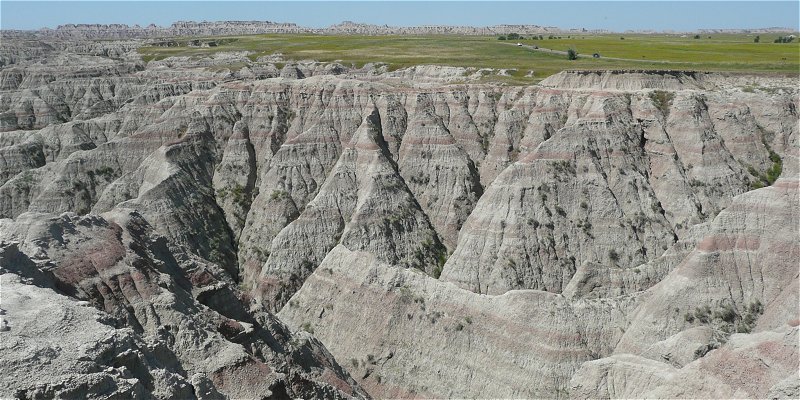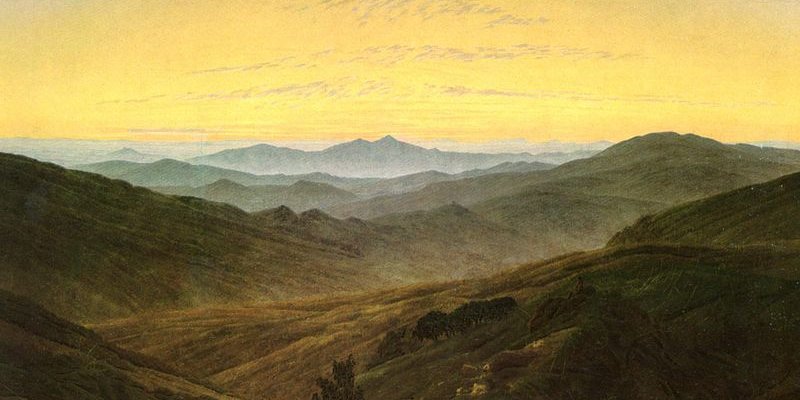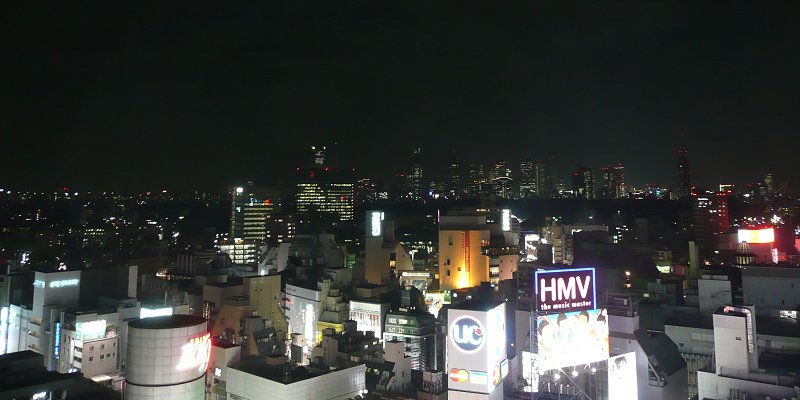Subliem sublime
... 
Rob
van der Bijl & Jake Wiersma, 2006-2017
Een
toegepast onderzoek naar sublieme ervaring in ruimte en landschap

Kust
Friesland ter hoogte van Holwerd en Blije.
Foto: Rob van der Bijl, 19 augustus 2016.
In
het verstedelijkte, volgelopen landschap van Nederland zijn de
voorwaarden voor sublieme ervaring grotendeels verdampt. Vooruitlopend
op onze definitie van het sublieme veronderstellen we dat met het
opgeven van het begrip ‘open ruimte’ (in het verleden
vaak ongelukkig aangeduid als ‘bufferruimte’ en onhandig
afgedwongen met ‘rode contouren’) de weg is vrijgemaakt
voor nihilistische en technocratische ruimtelijke ordening. Symbolisch
voor deze omslag of paradigmaverschuiving is een moment ergens
in 2002 waarop duidelijk wordt dat de Vijfde Nota Ruimtelijke Ordening
nimmer officieel zal worden vastgesteld.
Toch geloven we dat het
de moeite waard is om de bestaande voorwaarden, maar eveneens de
te ontwerpen voorwaarden voor sublieme ervaring te verkennen in
de landschappen van Wadden en Zeeland, van de grote rivieren en
polders, of van de oude woeste gronden, maar ook van de Noordzee.
Als onderdeel van het Waddenlandschap is de Friese kust een van
onze casussen.
We richten ons op drie projecten die respectievelijk gericht zijn op
het verkennen van cultuurhistorische afbakening van
het
begrip
subliem,
kunstzinnige
visualisering van
sublieme ervaring en ten slotte ontwerpmatige ingrepen in stad en landschap
om condities voor sublieme ervaring te optimaliseren.

Badlands,
VS, Zuid-Dakota. Foto: Rob van der Bijl, 22 juli 2009.
In
tegenstelling tot de banale en de esthetische ervaring is de sublieme
ervaring sterk persoons- en situatiegebonden. Stedebouwkundigen
Rob van der Bijl en Jake Wiersma doen als spin-off van hun reguliere
werk al jarenlang onderzoek naar het sublieme, en sublieme ervaringen
in
natuurlijke,
maar
juist
ook in kunstmatige landschappen. Eén van hun leermeesters
is de Amerikaanse architect Frank Lloyd Wright die in 1935 de Badlands
in Zuid-Dakota bezocht: "I've been about the world a
lot, and pretty much over our own country but I was totally unprepared
for
the revelation called the Dakota Bad Lands... What I saw gave me
an indescribable sense of mysterious elsewhere - a distant architecture,
ethereal..., and endless supernatural world more spiritual than
earth but created out of it."

Reuzegebergte
(Riesengebirge) / Voor zonsopgang in de bergen, Caspar David
Friedrich, 1830-1835. Courtesy: The Yorck Project.
Het
landschap is al sinds de 18e eeuw een bron van sublieme ervaringen
geweest. Aanvankelijk riep vooral de woeste natuur
die ervaring op. Men zocht een wereld, die wezenlijk verschilde
van
de eigen
vertrouwde omgeving. Het cultuurlandschap werd in die tijd door
velen zelfs als banaal ervaren. Maar naarmate er meer mensen in
steden gingen wonen, emancipeerde het cultuurlandschap zich ook
tot 'verheven
natuur'. Naast de woeste natuur werd de 'kalme verhevenheid'
van het pastorale vergezicht een bron van sublieme ervaring, zoals
op de schilderijen van Caspar David Friedrich. De schilder bracht
zijn missie als volgt onder woorden: "The
artist should paint not only what he sees before him, but also
what he sees within him. If, however, he sees nothing within him,
then he should also refrain from painting that which he sees before
him. Otherwise, his pictures will be like those folding screens
behind which one expects to find only the sick or the dead." (Busch,
Werner (2003), Caspar David Friedrich: Ästhetik und Religion,
Munich: C.H. Beck).

MoonTaurus
Littrow Vallei, Apollo 17 snapshot van de Lunar Rover Vehicle en omringend
landschap, december 1972. Courtesy: NASA.
Het
sublieme heeft in de kunsthistorie verschillende betekenissen gehad,
die alle in elkaars verlengde
liggen - het ontzagwekkende, het verhevene, het onbegrensde, het
buitengewone, het heilige. Edmund Burke (1729-1797) gaf als eerste
een systematische beschrijving van het sublieme (dan laten we gemakshalve
het werk
van zijn tijdgenoot en mede-filosoof Immanuel Kant (1724-1804)
vooralsnog buiten beschouwing; evenals het latere werk van Arthur
Schopenhauer (1788-1860)).
Burke onderscheidde
in zijn werk strikt het sublieme van het esthetische. Het esthetische
was volgens
hem liefelijk, aangenaam voor de zintuigen, het sublieme daarentegen
was vreeswekkend,
woest en soms zelfs
afstotend. Het esthetische was in zijn ogen gebaseerd op conventies,
het sublieme werkte op het gevoel. In de loop der tijd heeft het
sublieme verschillende betekenissen gekregen. Maar de kern is een
gevoel van verheffing, het uitstijgen boven de dagelijkse ervaringen,
zoals ultima forma mogelijk binnen het buitenaardse landschap
van de maan, door Buzz Aldrin (tweede astronaut op de eerste bemande
maanmissie
Apollo
11) getypeerd als “magnificent
desolation”. Harrison "Jack" Schmitt (astronaut/geoloog
van Apollo 17, de laatste bemande maanmissie tot nu toe) herinnert
zich zijn sublieme ervaring van het maanoppervlak: "The
orange soil never looks as orange to you in a picture as it did
to us while we were on the
moon."

Tokyo,
Japan.
Foto: Rob van der Bijl, 4 april 2008.
Het
buitenaardse landschap, of het aardse,
pastorale vergezicht, of
de persoonlijke ervaring van traag natuurlijk of stedelijk landschap
zijn niet de enige bronnen van de moderne sublieme ervaring. Behalve
voor fenomenale landschappen op aarde of elders in het
universum zijn er voor de fijnproevers ook nieuwe
stedelijke landschappen, bijvoorbeeld de skyline van metropolitaan
territorium. Zo is de ervaring van schaal
en maat
in Tokyo subliem. Deze ongrijpbare metropool is uitgestrekt,
oogt traag in de nacht, maar bezit onmiskenbaar een extreem
hoge dynamiek. De Japanse schrijver Haruki
Murakami brengt de sublieme ervaring van Tokyo als volgt onder
woorden: “Eyes
mark the shape of the city. Through the eyes of a high-flying night
bird,
we take
in
the scene
from midair. In our broad sweep, the city looks like a single gigantic
creature – or more like a single collective entity created
by many intertwining organisms. … To the rhythm of its pulsing,
all parts of the body flicker and flare up and squirm. Midnight
is approaching, and while the peak of activity has passed, the
basal metabolism that maintains life continues undiminished, producing
the basso continuo of the city’s moan, a monotonous sound
that neither rises nor falls but is pregnant with foreboding.” (Haruki
Murakami: AFTER DARK, Tokyo 2004)
Naar
RVDB...
Top...
English
summary...
Sublime
Rob
van der Bijl & Jake Wiersma, 2006-2017
An
applied research into sublime experience in space and landscape

Friesland
coast at Holwerd and Blije (Netherlands). Photo: Rob van der Bijl,
August 19, 2016.
Conditions
for sublime experience have been largely evaporated in nowadays
Dutch landscapes. Still we believe it makes sense to investigate
existing and newly designed conditions in many territories. Our
first case is the landscape of the Friesland coast (Netherlands).

Badlands,
USA, South Dakota. Photo: Rob van der Bijl, July 22, 2009.
Urban
planners Rob van der Bijl and Jake Wiersma investigate the sublime,
i.e. sublime experiences of natural and artificial landscapes.
One of their references is the American architect Frank Lloyd Wright
who once visited the Badlands (South Dakota, 1935): "I've
been about the world a lot, and pretty much over our own country
but I was totally unprepared for the revelation called the Dakota
Bad Lands... What I saw gave me an indescribable sense of mysterious
elsewhere - a distant architecture, ethereal..., and endless supernatural
world more spiritual than earth but created out of it."

Giant
Mountains (Riesengebirge) / Before sunrise in the mountains, Caspar
David Friedrich, 1830-1835. Courtesy: The Yorck Project.
The
paintings of Caspar
David Friedrich reflect sublime experiences in 19th century perspective
on 'splendid nature': "The
artist should paint not only what he sees before him, but also
what he
sees
within him. If, however, he sees nothing within him, then he should
also
refrain from painting that which he sees before him. Otherwise,
his pictures will be like those folding screens behind which
one expects to find only the sick or the dead." (Busch,
Werner (2003), Caspar David Friedrich: Ästhetik und Religion,
Munich: C.H. Beck).

MoonTaurus
Littrow Valley, Apollo 17 snapshot of Lunar Rover Vehicle and surrounding
landscape, December 1972. Courtesy: NASA.
According
theories of art history the sublime represented various meanings.
Edmund Burke was the first who systematically defined the sublime.
He distinguished strictly between the sublime and the aesthetic.
The latter reflects the common and the pleasure that are both based
on conventions. The sublime surpasses daily experiences and primarily
reflects splendidness, in ultima forma possible within the extra-terrestrial
landscape of the moon, like “magnificent desolation” according
Buzz Aldrin (second astronaut of Apollo 11 the first manned mission
to the moon). Harrison "Jack" Schmitt (astronaut/geologist
of Apollo 17, the last manned moon mission so far) recalls his
sublime experience on the moon surface: "The orange soil
never looks as orange to you in a picture as it did to us while
we were
on the moon."

Tokyo,
Japan.
Photo: Rob van der Bijl, April 4, 2008.
Like
extra-terrestrial landscapes artificial landscapes on earth could
also act as source of modern sublime experiences. The Japanese
writer Haruki Murakami expresses his sublime experience of the
urban landscape of metropolitan Tokyo: “Eyes
mark the shape of the city. Through the eyes of a high-flying
night bird, we take in the scene from midair. In our broad
sweep, the
city looks like a single gigantic creature – or more
like a single collective entity created by many intertwining
organisms. … To
the rhythm of its pulsing, all parts of the body flicker
and flare up and squirm. Midnight is approaching, and while
the peak of activity
has passed, the basal metabolism that maintains life continues
undiminished, producing the basso continuo of the city’s
moan, a monotonous sound that neither rises nor falls but
is pregnant with foreboding.” (Haruki Murakami:
AFTER DARK, Tokyo 2004)
To
RVDB...
Top...